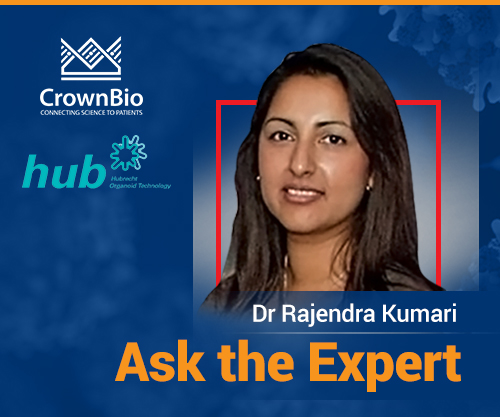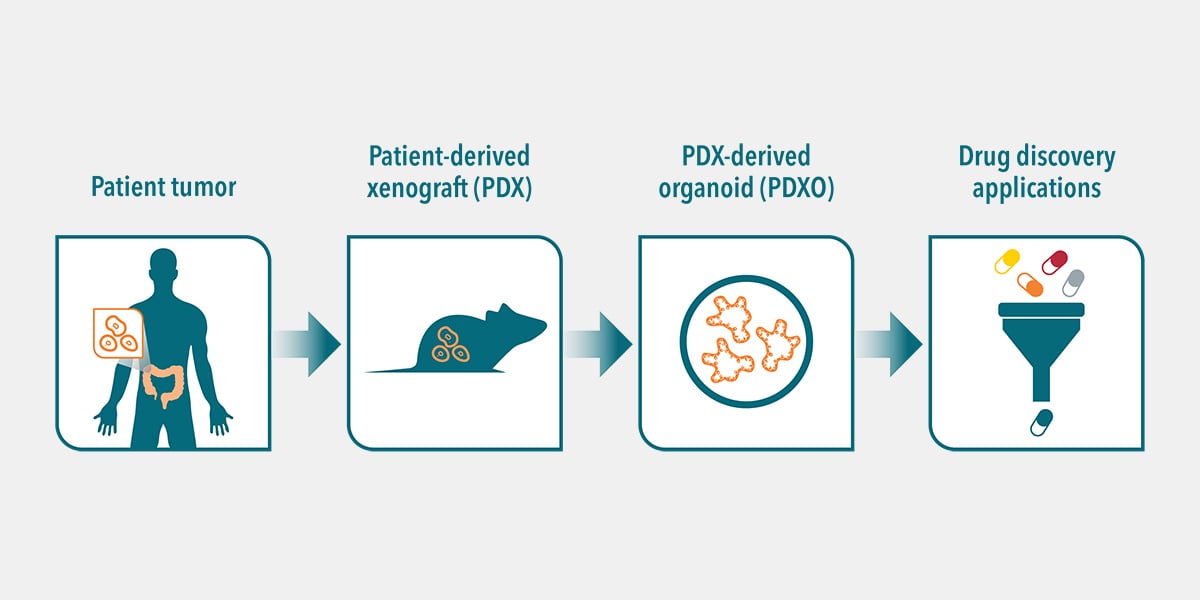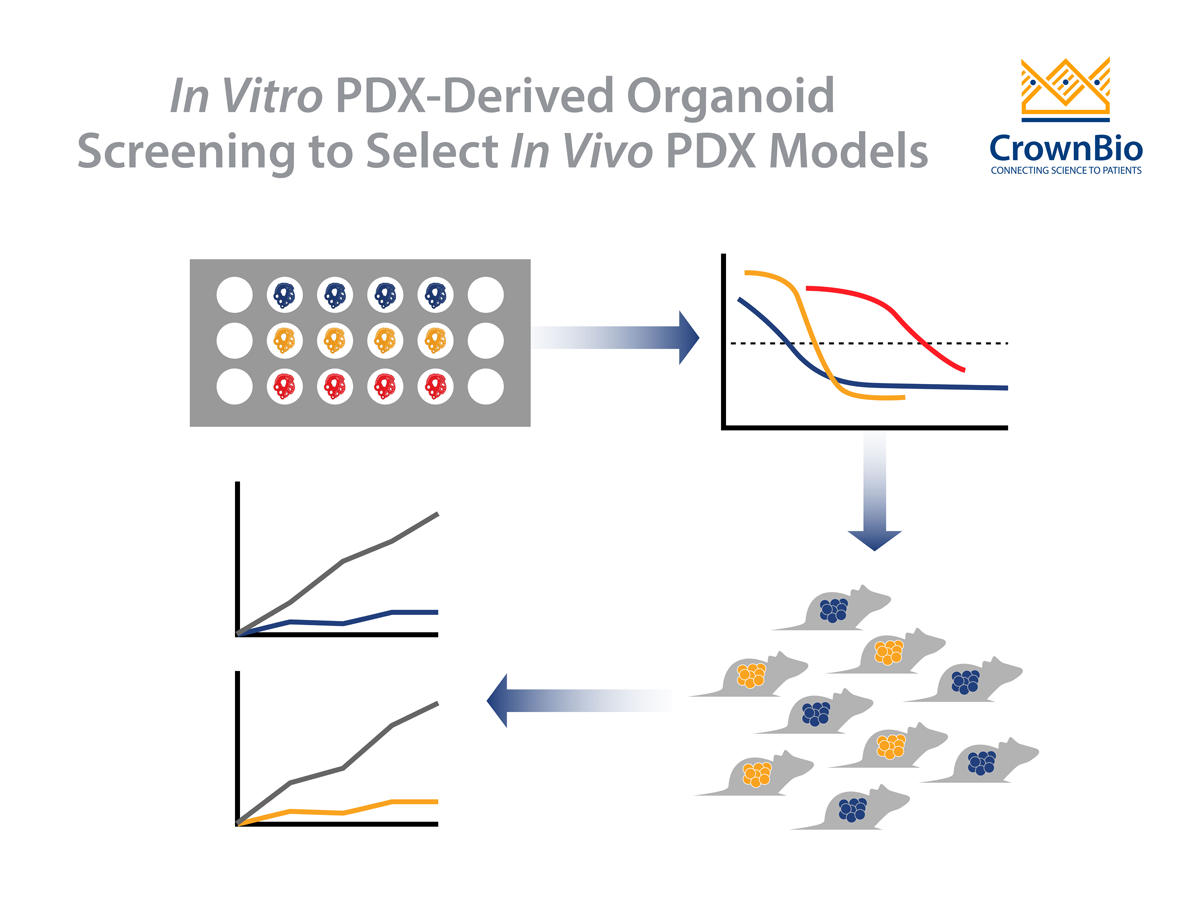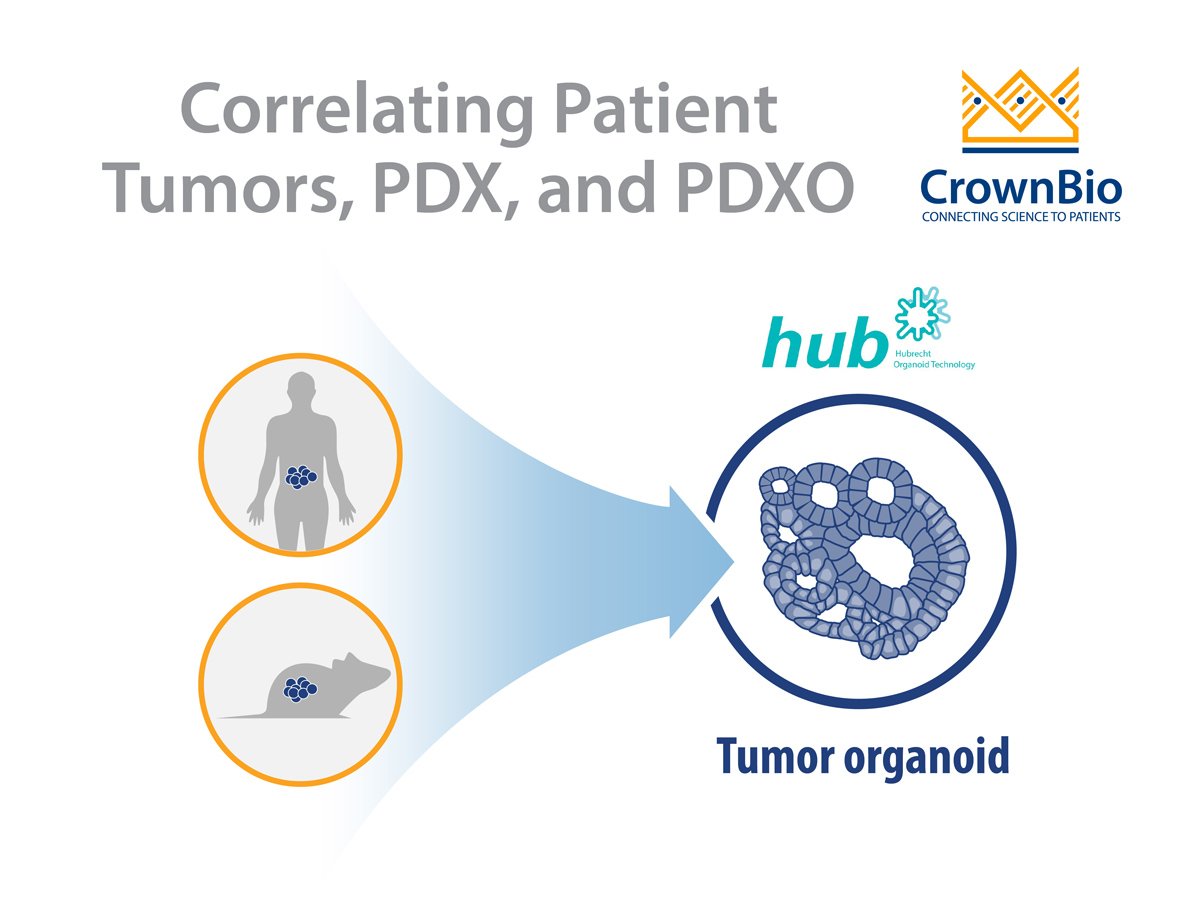 Review the key questions on the development of PDX-derived organoids (PDXO) from our recent webinar, answered by Dr. Rajendra Kumari, Global Head of Scientific Communication.
Review the key questions on the development of PDX-derived organoids (PDXO) from our recent webinar, answered by Dr. Rajendra Kumari, Global Head of Scientific Communication.
PDX-Derived Organoid Development
What are the Advantages of using Matrigel® for PDXO Culture?
Matrigel provides an extracellular matrix (ECM) to support stem cell growth, 3D aggregation, and polarization of stem cells, and also forms part of the protocols published by the Clevers lab. However, use of other synthetic hydrogels is described by other groups.
How do you Remove Normal Fibroblasts from the PDXO Culture?
The culture conditions propagate organoids of epithelial origin only, so do not support any stromal cells.
Is There any Scope that this Work could be Translated to Tumor Types that are Not Derived From Epithelial Cells?
Yes, we have attempted to establish organoid cultures of non-epithelial tumors e.g. brain, but these are still in the experimental phase. This is due to the conditions potentially differing from standard Hubrecht Organoid Technology (HUB) protocols, which are designed for epithelial organs rather than organoids derived from pluripotent stem cells.
What is the Average Number of Generations you've been able to Passage your Organoids?
This varies as it is dependent on the time it takes to develop a robust stable organoid line which may be achieved over 3 passages or more. Genetic stability is key here and we are still expanding this as we expand our PDXO biobanks.
What Assays would you use to Identify Organoids Compared to Spheroids?
The culture media is specifically designed to promote organoid development, however a pathologist typically examines our H&E images to confirm model identity and identify the multilineage structure of an organoid.
PDX-Derived Organoid Model Types
Have You had Success in Establishing PDXO from all Tumor Types?
Currently, we’ve generated organoids from our PDX models for over 13 different cancer types, and we’ve got many more in development.
Are Prostate Cancer Organoids Available?
We’ve generated a few prostate cancer PDX models, and one castrate-resistant prostate cancer model is currently growing as an organoid. It’s not ready for service yet, but hopefully will be in the near future.
Which Main Disease Subtypes do your Breast Cancer Models Represent, and How Many Models are There per Subtype?
We have a range of breast cancer subtypes within our PDX collection. For PDXO, we currently have two triple negative breast cancer (TNBC) organoids available and a further nine breast cancer PDXO coming through including TNBC and ER+ models.
Where Can We get a List of which Models you've Made into Organoids?
We’ve launched our new PDXO database, OrganoidBase. Here you’ll find all the information and data for the PDXO that we’ve established. More models and their data will be added in regular updates, as we have 100s more PDX-derived organoids in expansion and validation phases.
Since only the Most Aggressive Human Tumors grow as PDX, are your PDXOs Derived Exclusively from High Grade Cancer?
Typically, yes more aggressive tumors engraft better as PDX models. However, in our collection we have a range of different grade PDX and we will attempt to establish PDXO for all of them.
We’ll be publishing further PDXO Q&A posts to review correlating PDXO to PDX and patient tumors, and PDXO applications.










